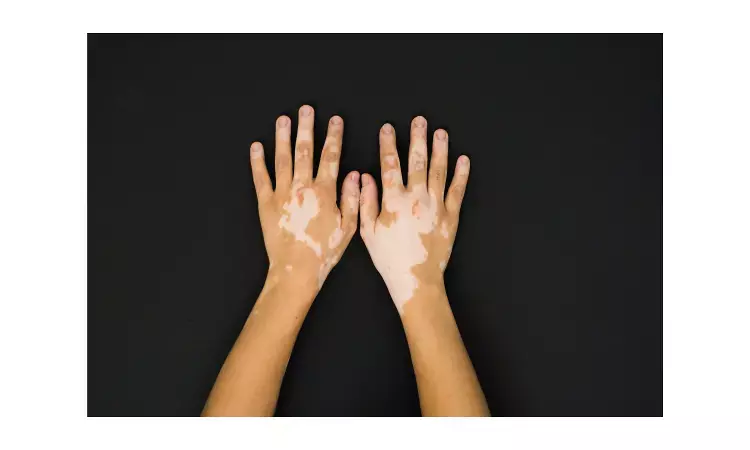- Home
- Medical news & Guidelines
- Anesthesiology
- Cardiology and CTVS
- Critical Care
- Dentistry
- Dermatology
- Diabetes and Endocrinology
- ENT
- Gastroenterology
- Medicine
- Nephrology
- Neurology
- Obstretics-Gynaecology
- Oncology
- Ophthalmology
- Orthopaedics
- Pediatrics-Neonatology
- Psychiatry
- Pulmonology
- Radiology
- Surgery
- Urology
- Laboratory Medicine
- Diet
- Nursing
- Paramedical
- Physiotherapy
- Health news
- Fact Check
- Bone Health Fact Check
- Brain Health Fact Check
- Cancer Related Fact Check
- Child Care Fact Check
- Dental and oral health fact check
- Diabetes and metabolic health fact check
- Diet and Nutrition Fact Check
- Eye and ENT Care Fact Check
- Fitness fact check
- Gut health fact check
- Heart health fact check
- Kidney health fact check
- Medical education fact check
- Men's health fact check
- Respiratory fact check
- Skin and hair care fact check
- Vaccine and Immunization fact check
- Women's health fact check
- AYUSH
- State News
- Andaman and Nicobar Islands
- Andhra Pradesh
- Arunachal Pradesh
- Assam
- Bihar
- Chandigarh
- Chattisgarh
- Dadra and Nagar Haveli
- Daman and Diu
- Delhi
- Goa
- Gujarat
- Haryana
- Himachal Pradesh
- Jammu & Kashmir
- Jharkhand
- Karnataka
- Kerala
- Ladakh
- Lakshadweep
- Madhya Pradesh
- Maharashtra
- Manipur
- Meghalaya
- Mizoram
- Nagaland
- Odisha
- Puducherry
- Punjab
- Rajasthan
- Sikkim
- Tamil Nadu
- Telangana
- Tripura
- Uttar Pradesh
- Uttrakhand
- West Bengal
- Medical Education
- Industry
intralesional steroid injection with UV light effective option for treating vitiligo: Study

Egypt: Vitiligo is a condition where the skin loses pigment. Vitiligo occurs in about 1% or slightly more of the population throughout the world. Treatment of vitiligo with intralesional steroid (ILS) injections has shown to be successful in quite a few studies.
A new study by Dr. Moetaz El-Domyati MD and team revealed that intralesional corticosteroid injections combined with NB-UVB are an efficient therapeutic option for vitiligo. Triamcinolone acetonide was the safest with fewer side effects and complications at 0.625 and 1.25 mg/ml. However, higher concentrations of 2.5 and 5 mg/ml were more effective but with more side effects. The findings of the study are published in The International Journal of Dermatology.
The objective of the study was to explore the efficacy and safety of using different concentrations of intralesional corticosteroid combined with NB-UVB phototherapy in the treatment of non-segmental vitiligo (NSV) patients.
The study included 22 patients with non-segmental vitiligo, they were subjected to different concentrations of ILS injections (triamcinolone acetonide); which was carried out monthly for six sessions. All patients were also subjected to twice-weekly sessions of NB-UVB for 6 months. Punch biopsy was taken from each patch before and at the end of treatment sessions. Each biopsy was stained with hematoxylin and eosin (H&E), Orcein, and Masson's trichrome stains.
The results of the study were:
• There was a significant difference between all groups in their repigmentation response.
• After treatment, the epidermal thickness (histometry) was decreased (epidermal atrophy).
• Concentrations of 2.5 and 5 mg/ml of intralesional triamcinolone acetonide injection showed decreased and disorganized collagen fibers.
El-Domyati and the team concluded that "Intralesional corticosteroid injections combined with NB-UVB showed a good and well-tolerated therapeutic option for vitiligo. The concentrations of 0.625 and 1.25 mg/ml of triamcinolone acetonide was the safest with fewer side effects and complications. However, higher concentrations of 2.5 and 5 mg/ml were more effective but with more side effects."
Reference:
The study titled, "The use of intralesional corticosteroid combined with narrowband ultraviolet B in vitiligo treatment: clinical, histopathologic, and histometric evaluation," is published in the International Journal of Dermatology.
DOI: https://onlinelibrary.wiley.com/doi/abs/10.1111/ijd.15940
Medical Dialogues consists of a team of passionate medical/scientific writers, led by doctors and healthcare researchers. Our team efforts to bring you updated and timely news about the important happenings of the medical and healthcare sector. Our editorial team can be reached at editorial@medicaldialogues.in.
Dr Kamal Kant Kohli-MBBS, DTCD- a chest specialist with more than 30 years of practice and a flair for writing clinical articles, Dr Kamal Kant Kohli joined Medical Dialogues as a Chief Editor of Medical News. Besides writing articles, as an editor, he proofreads and verifies all the medical content published on Medical Dialogues including those coming from journals, studies,medical conferences,guidelines etc. Email: drkohli@medicaldialogues.in. Contact no. 011-43720751


